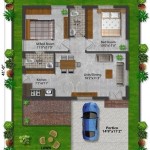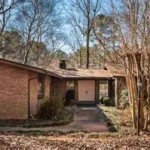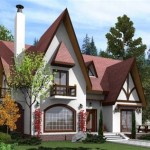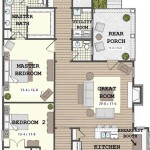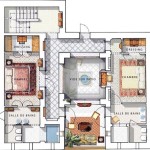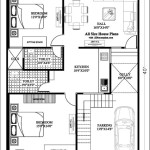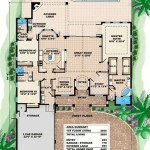Bryan Baeumler's "House In The Sticks": Exploring the Floor Plan of a Rural Retreat
Bryan Baeumler, renowned for his expertise in home renovation and construction, has consistently captivated audiences with his practical approach and dedication to quality craftsmanship. His projects often showcase innovative design solutions tailored to specific challenges and environments. The "House In The Sticks," a project undertaken in a remote, rural setting, exemplifies this approach. A crucial element of any successful construction or renovation project is a well-defined floor plan. Understanding the floor plan of Bryan Baeumler’s "House In The Sticks" provides valuable insights into its design principles, functionality, and overall aesthetic.
The "House In The Sticks" project likely aimed to create a comfortable, functional, and aesthetically pleasing living space that integrates seamlessly with its natural surroundings. Given the remote location, self-sufficiency and resourcefulness likely played significant roles in the design considerations. Therefore, examining the floor plan reveals choices made regarding space utilization, material selection, energy efficiency, and the connection between the interior and the exterior environment.
Key Point 1: Emphasis on Open-Concept Living and Natural Light
A prominent feature of many modern homes, and likely incorporated into the "House In The Sticks," is an open-concept living area. This design approach typically combines the kitchen, dining room, and living room into a single, unified space. The benefits of this layout are numerous. It promotes social interaction, creates a sense of spaciousness, and allows for greater flexibility in furniture arrangement. In a rural setting, an open-concept design can further enhance the connection with the outdoors by providing unobstructed views of the surrounding landscape through strategically placed windows and doors.
The placement and size of windows are critical considerations within this open-concept space. Maximizing natural light is a primary design goal, especially in remote locations where artificial lighting sources might be less reliable or more costly to operate. Large windows, skylights, and strategically positioned glass doors can flood the interior with daylight, reducing the need for artificial lighting during the day. Furthermore, natural light contributes to a more comfortable and inviting atmosphere, enhancing the overall living experience. The floor plan would likely illustrate the careful placement of these fenestration elements to optimize light penetration while considering factors such as solar orientation and privacy.
The orientation of the house itself would also play a key role in maximizing natural light and achieving optimal thermal performance. A south-facing orientation, for example, allows for maximum solar gain during the winter months, reducing heating costs. However, in the summer months, it may be necessary to provide shading to prevent overheating. The floor plan would therefore need to consider strategies for solar control, such as overhangs, awnings, or strategically planted trees, to create a comfortable and energy-efficient living environment year-round. The placement of windows, doors, and outdoor living spaces would be carefully coordinated with the solar path to minimize unwanted heat gain and maximize natural light penetration.
Within the open-concept space, the kitchen layout would be a focal point. The floor plan would likely show a well-designed kitchen with ample counter space, storage, and efficient workflow. An island or peninsula could serve as a central hub for food preparation and social interaction. The appliances would be strategically placed to optimize efficiency and minimize clutter. The dining area would be seamlessly integrated with the kitchen, creating a natural transition between cooking and dining. The living room area would be designed for comfort and relaxation, with comfortable seating, a focal point such as a fireplace or entertainment center, and ample space for circulation.
Key Point 2: Incorporation of Sustainable and Energy-Efficient Design Elements
Given Bryan Baeumler's commitment to sustainable building practices, the "House In The Sticks" floor plan likely incorporates numerous energy-efficient design elements. These elements are crucial for reducing the environmental impact of the home and lowering its operating costs. In a remote location, self-sufficiency and resource conservation are particularly important considerations.
One key aspect of energy-efficient design is insulation. The floor plan would specify the type and thickness of insulation used in the walls, roof, and foundation. Proper insulation is essential for minimizing heat loss in the winter and heat gain in the summer, reducing the need for heating and cooling. The choice of insulation material would likely be based on its R-value (a measure of thermal resistance), its environmental impact, and its compatibility with the local climate.
Another important element is the design of the heating and cooling system. The floor plan might indicate the use of a high-efficiency furnace, a geothermal heat pump, or a passive solar heating system. The choice of heating and cooling system would depend on the availability of resources, the climate, and the homeowner's preferences. In a remote location, renewable energy sources such as solar panels or wind turbines might be used to generate electricity for the home. The floor plan would need to accommodate the installation of these renewable energy systems and their associated equipment.
Water conservation is another critical aspect of sustainable design. The floor plan might incorporate low-flow fixtures, such as toilets, showerheads, and faucets, to reduce water consumption. A rainwater harvesting system could be used to collect rainwater for irrigation or other non-potable uses. A greywater recycling system could be used to recycle water from showers and sinks for flushing toilets. These water conservation measures would help to reduce the demand on local water resources and lower water bills.
The choice of building materials would also reflect sustainable design principles. The floor plan might specify the use of locally sourced materials, recycled materials, or materials with low embodied energy. The embodied energy of a material is the total energy required to extract, process, manufacture, and transport it. Using materials with low embodied energy helps to reduce the overall environmental impact of the home. Durable and low-maintenance materials would also be prioritized to minimize the need for repairs and replacements over the lifespan of the home.
Key Point 3: Functional Layout Prioritizing Practicality and Connection to the Outdoors
The "House In The Sticks" floor plan would prioritize a functional layout that addresses the practical needs of the occupants while fostering a strong connection to the surrounding natural environment. This involves carefully considering the flow of movement within the house, the placement of essential amenities, and the integration of indoor and outdoor spaces.
Given the rural setting, the inclusion of a mudroom or entryway would be highly probable. This space would serve as a transition zone between the outdoors and the main living area, providing a place to remove muddy boots, wet coats, and other outdoor gear. The floor plan would likely show a well-organized mudroom with storage for shoes, coats, and other items. The mudroom might also include a laundry area, providing a convenient place to wash and dry clothes after outdoor activities.
Storage space would be another essential consideration. The floor plan would likely incorporate ample storage throughout the house, including closets, cabinets, and shelving. Designated storage areas for outdoor equipment, tools, and supplies would also be important, particularly in a rural setting where self-sufficiency is often a priority. A pantry adjacent to the kitchen would provide storage for food and other kitchen supplies. A linen closet would provide storage for towels and bedding. A utility room would house the heating and cooling equipment, water heater, and other mechanical systems.
Connecting the indoor and outdoor spaces would be a key design goal. The floor plan would likely show large windows, doors, and outdoor living spaces that facilitate access to the surrounding landscape. A deck, patio, or porch would provide a comfortable space for outdoor dining, relaxation, and recreation. The orientation of these outdoor living spaces would be carefully considered to maximize views, provide shade, and minimize exposure to the elements. The floor plan might also incorporate features such as outdoor fireplaces, outdoor kitchens, or outdoor showers to enhance the outdoor living experience.
The layout of the bedrooms would be designed to provide privacy and comfort. The floor plan might show a master suite with a private bathroom and walk-in closet. Additional bedrooms would be located away from the main living area to minimize noise disturbance. The bathrooms would be designed for functionality and efficiency, with features such as low-flow fixtures, ample storage, and good ventilation. The overall layout of the house would be designed to create a comfortable and functional living environment that meets the specific needs of the occupants while respecting the natural surroundings.
In conclusion, analyzing the floor plan of Bryan Baeumler's "House In The Sticks" reveals a design that prioritizes open-concept living, energy efficiency, and a strong connection to the outdoors. The innovative use of space, strategic placement of windows, and incorporation of sustainable materials demonstrate a commitment to creating a functional, aesthetically pleasing, and environmentally responsible home in a challenging rural environment. Further information could be obtained from architectural renderings, project documentation, or interviews with the design team involved in the construction of the House In The Sticks project.

House Of Bryan In The Sticks Main Floor Dream Plans Modern Layouts

75 House Of Bryan In The Sticks Ideas Home Design Decor

House Of Bryan In The Sticks Second Floor Dream Plans Modern

Bryan Baeumler Reveals His 10 Favourite Rooms He S Ever Designed

75 House Of Bryan In The Sticks Ideas Home Design Decor

House Of Bryan 3 Icf Builder

Bryan Baeumler Reveals His 10 Favourite Rooms He S Ever Designed

75 House Of Bryan In The Sticks Ideas Home Design Decor

New Season Of House Bryan Has Baeumler Family In The Sticks Globalnews Ca

House Of Bryan 3 Icf Builder

